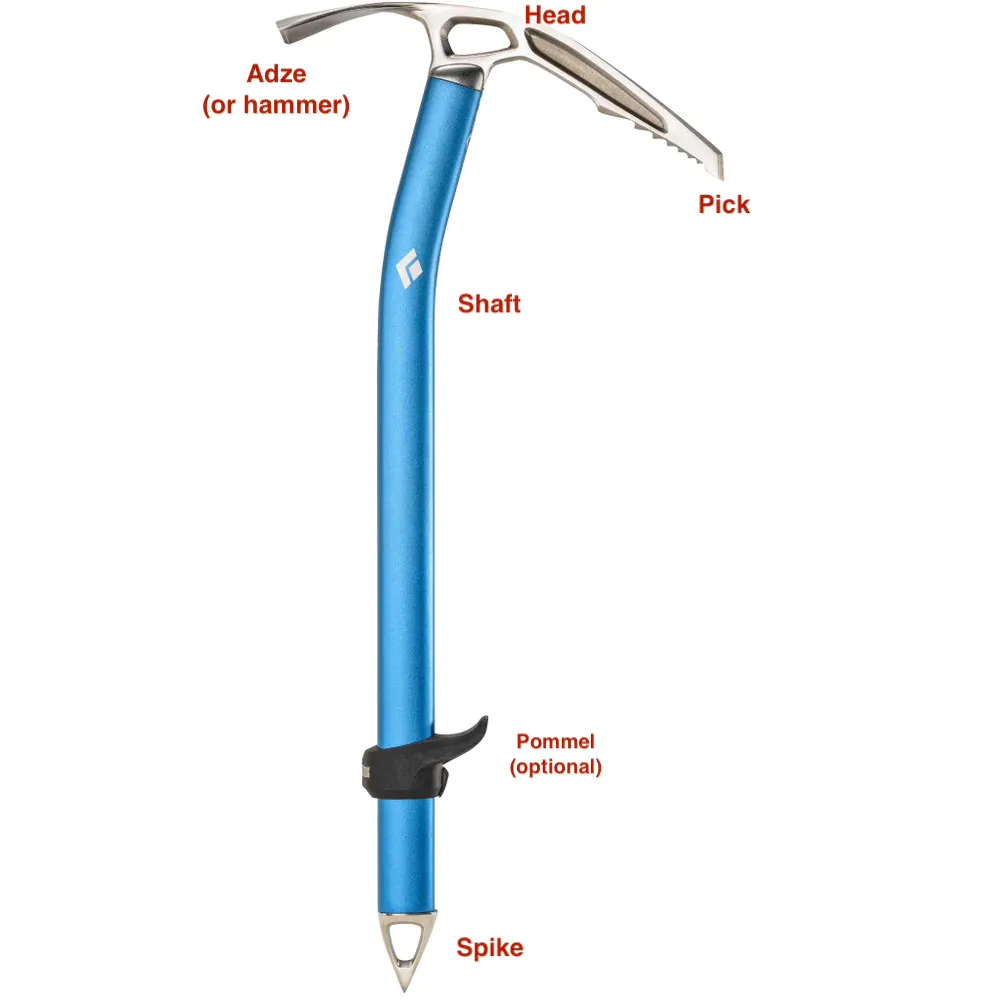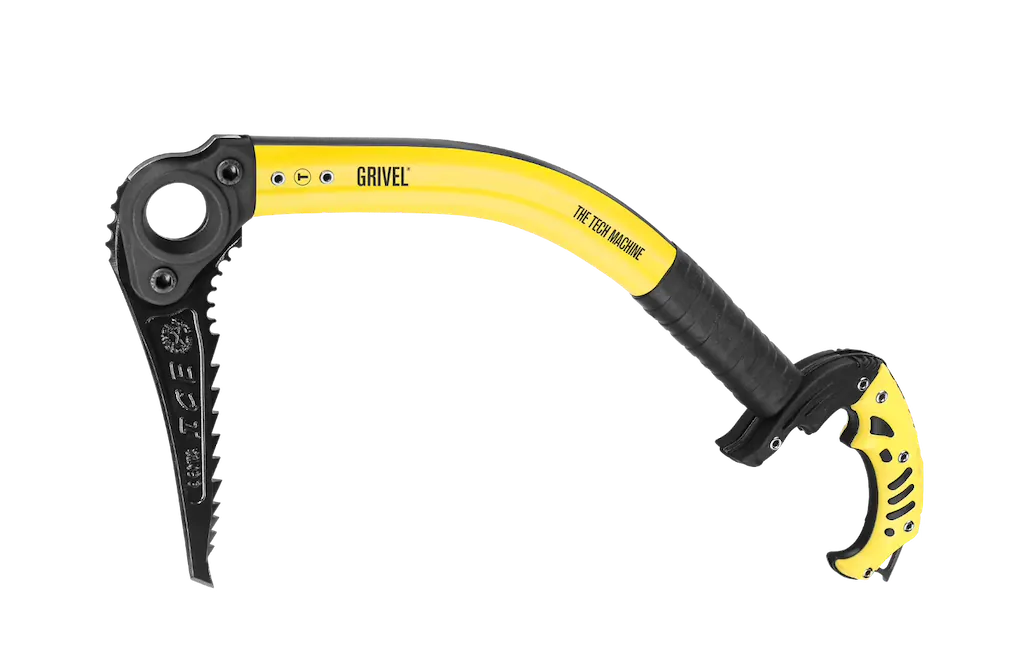Ice axes & ice tools
Main types
Ice axe is an essential tool in mountaineering, indispensable for climbing ice and snow covered peaks, traversing glaciers, and ensuring safety on steep and frozen terrain.
There are two main types: mountaineering ice axes and ice climbing tools.

Ice axe anatomy
No matter the type of the ice axe, the anatomy is similar. The head consists of the pick and adze (or hammer). The shaft has a spike or a sharp-angled cut at the bottom. Pommels, leashes and other accessories are optional.
Adze is used for digging (steps, holes for anchors, etc.), and hammer - for hammering (obvious). In a mountaineering axe adze is essential, while the hammer is rarely applicable.
Ice axes are classified by strength into CEN-B (Type 1) and CEN-T (Type 2). Technical ice axes and ice tools are CEN-T certified. What's the difference? 250 vs 400 kg of force. Simply, CEN-T is significantly stronger and more durable.

Mountaineering ice axes
Basic ice axes are designed for use in snow conditions for general mountaineering, and are adequate for basic support, glacier travel and self-arrest. More technical mountaineering ice axes have curved shafts, and are strong enough to be used for steep climbing.
Traditionally the required ice axe length should be equal to the distance from the palm to the ankle while standing straight. But nowadays people tend to choose shorter and lighter ice axes, even going to extremely short lengths (45cm) for ski-mountaineering.

Ice tools
Used for steep or vertical ice climbing, dry-tooling or mixed climbing, ice tools have a more dramatically curved shaft and a pick with inverted angle for maximum penetration and hold angle.
Ice tools have interchangeable picks (ice, rock, or mixed), and have either the hammer, the adze or none attachments in the back of the head - based on climber's preferences, technique and route conditions / needs.


